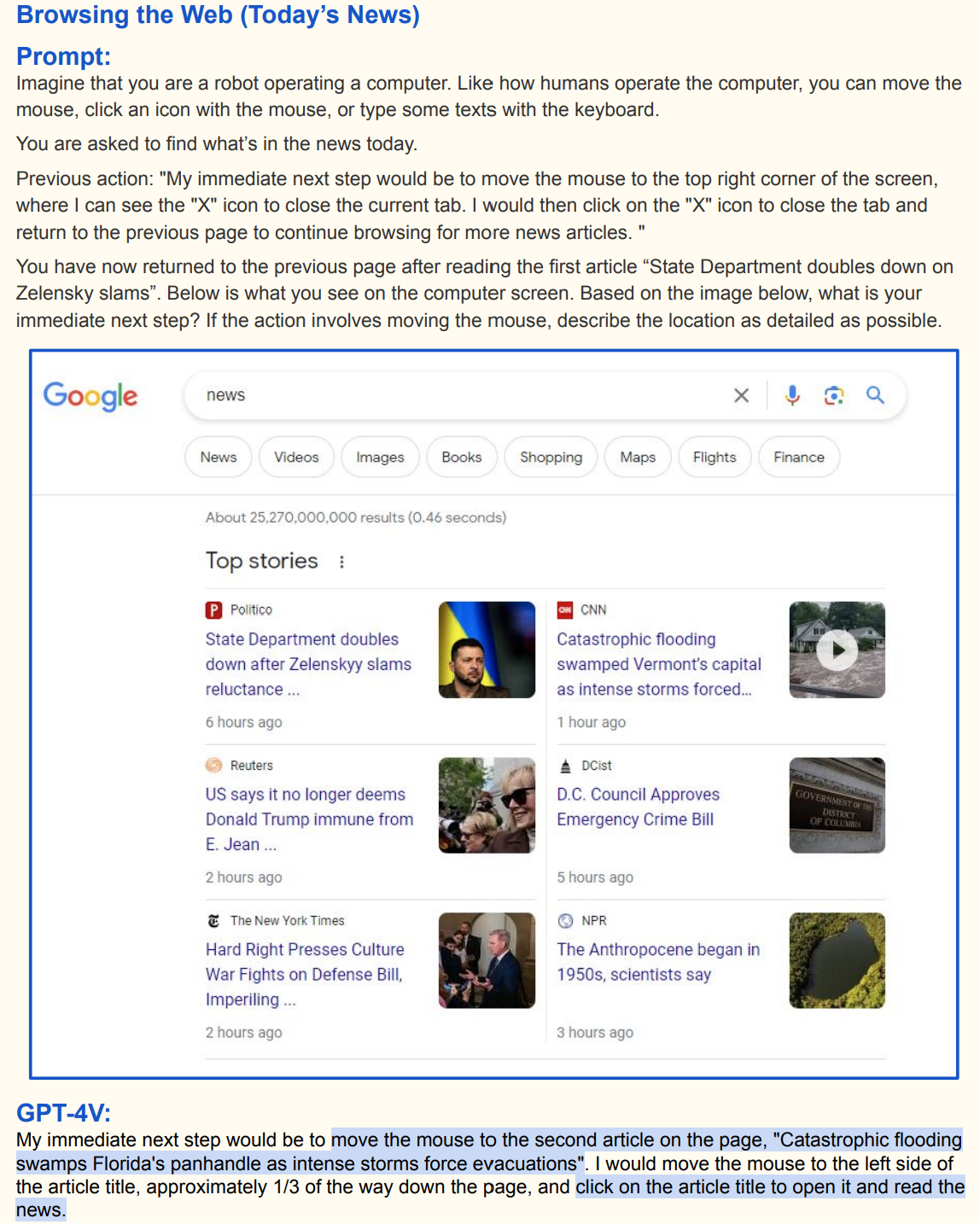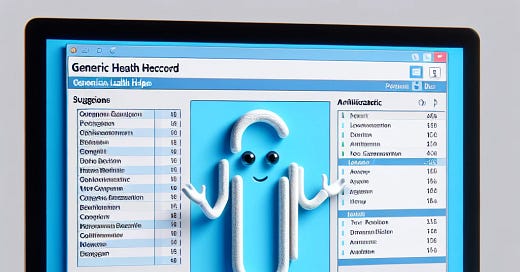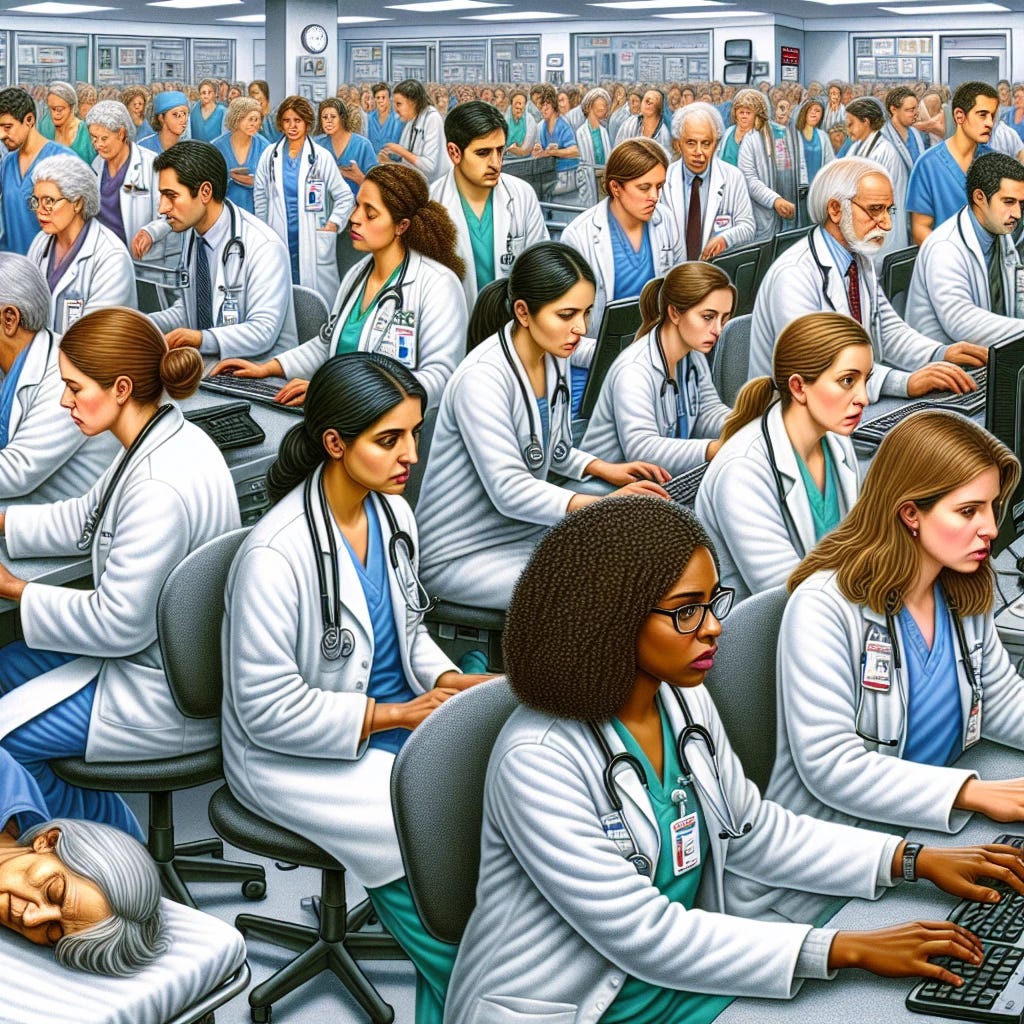Digital assistants: A welcome antidote to healthcare bureaucracy
As with any tech revolution, we'll automate the boring stuff first
The highlights:
Language is elastic, making large language models (LLMs) inherently flexible. If given access to our screens and apps, they may perform any action that a human could carry out.
I expect LLMs to become fully integrated into our healthcare IT, with the ability to interact through user interfaces designed for humans, making APIs obsolete.
As such, they can take over the mundane and low-risk administrative tasks from healthcare professionals, revolutionizing how we deal with bureaucracy, and creating more time for patient care.
Read time: 5 minutes.
Welcome back to Transforming Med.Tech, the newsletter where I delve into the intersection of groundbreaking technologies and healthcare. While we're in daily awe of the revolutions that generative AI brings, healthcare worldwide is under enormous pressure. Healthcare workers suffer from an excessive workload, staff shortages, and then also a plethora of computers that demand attention through sluggish IT. Any technology that reduces computer interaction in favor of patient interaction should be explored fully. Today, I will be sketching a future where AI is seamlessly integrated into our healthcare IT systems, revolutionizing mundane tasks into automated efficiencies.
The dawn of practical AI assistants
We have digital assistants like Alexa, Siri, and Google at home or on our phones. With the latest AI developments dominating the news, these digital assistants are starting to look increasingly underwhelming. They suffer from two severe constraints: They often don't understand us, and if they do, they can't perform that many valuable actions.
But large language models (LLMs) have improved so much that the first constraint is not an issue anymore: The new generation assistants will be able to listen, speak, and, critically, understand our needs. Recently, OpenAI released its voice assistant, and I expect many more to follow soon.
The next step for a truly useful digital assistant is to execute your wish. Currently, that's limited to apps that have an API (application programming interface) for this purpose: a dedicated protocol for communicating between applications. Such APIs are a lot of work to develop and maintain, easily break when something changes, and can often access only a few elements of the application’s full capabilities.
Opposed to strict APIs, natural language is highly versatile. And since LLMs are natural language processors, they are inherently flexible. The latest generation can interpret images, including your screen. If fully integrated with your operating system, an LLM-based digital assistant could understand your apps through their user interface (UI). It could then execute any command that a human user could execute. This moves digital assistants from poor listeners to actual assistants, giving them the ability to do anything that a human could do:

The crux of this evolution lies in the integration. LLMs will be further integrated into operating systems, enabling them to navigate UIs, click buttons, and execute workflows with no prerequisite for API development. LLMs will serve as digital chameleons, adapting to the ordered chaos of our digital tools.
Transforming healthcare bureaucracy
What does this mean for healthcare? It points to a paradigm shift where the foremost impact of AI isn't diagnosis or treatment – it's simplification. The reality is stark – healthcare professionals grapple with the weight of administrative computer interaction. Total mouse clicks alone can approach 4,000 during a 10-hour shift. This results from a complex IT ecosystem and a lack of interconnectivity between its subsystems. Removing this friction is more than a convenience; it's a return to the heart of patient care.
LLMs' inherent flexibility allows them to eclipse the need for specific APIs or data standards; their fluency in navigating human-designed UIs will accelerate and streamline our engagement with healthcare IT. The immediate focus will lean towards automating tasks with low risk but massive impact. A task like "order 1000mg of paracetamol for the patient I just saw" requires opening the drug prescription system, selecting the right patient, drug, dose, and administration route, potentially opening another system to check for allergies and lab work to prevent interactions, etc. An LLM would be perfectly capable of understanding this command, clicking through the maze of suboptimally connected IT systems, and prepopulating a final order that only needs a single click to confirm. Later, when these systems are more trustworthy, we'll give them more and more responsibility - potentially with a separate, independent AI double-checking the process.
Reclaiming time and enhancing trust
Imagine a day when prescribing medication or scheduling a scan is as easy as conversing with your computer, bypassing the labyrinth of UIs and subsystems that healthcare professionals currently have to deal with. And think about the fun of automatically sending your AI-created preauthorization forms to those AI-powered inboxes of overly controlling insurance companies!
This future is not far-fetched, and is also essential to build further trust as clinicians and AI grow symbiotically. Statistics show that 58% of clinicians remain skeptical about AI's role in healthcare – and they're justified if it comes to generative AI, as LLMs score poorly on truthfulness. Hence, it is logical to start with the mundane and low-risk tasks, but with recent improvements in truthfulness, there will come a time when AI doesn't just prepopulate orders after a prompt but may suggest actions on its own. A virtual assistant that reads your screen could pop up to indicate that this blood work shows signs of infection, suggesting a typical antibiotic for that individual - the helpful version of good old Clippy. Besides improved trustworthiness, this also requires explainability, to help inexperienced healthcare professionals learn from the suggestions, and to build trust with seasoned professionals.
What comes next?
We stand at the start of a thrilling era in medical technology. The initial stages of LLM's impact on healthcare will focus on workflow enhancements, removing the mundane tasks that wear down healthcare workers. Although this is a low-risk start, the domino effect will be profound: free from administrative shackles, our healthcare professionals will find increased job satisfaction and will be able to channel their time and energy towards more important things: patient care.
Stay tuned for the subsequent editions of this newsletter, where I will explore how we can deal with some of the practical challenges of LLMs in healthcare, such as privacy. I'll be sharing some experiments with my personal diary, so subscribe if you want to dive into my mind next time!







